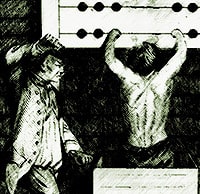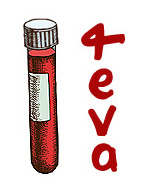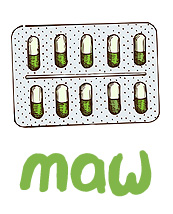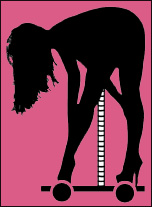You, American Consumer, hero of the resource depletion epic, wish to pursue your purpose with the purest food and in the cleanest environments. You wish to consume both quality and quantity, and to be untroubled by lack of plenty; desiring fresh vegetables in winter and fresh meat out of olfactory range from the slaughter yard. As you were raised with a raging sense of entitlement and now pursue your living in an economy that may have you up and toiling away at any hour of day or night, you also wish to have access to these things at low prices and 24/7. Any food retailer with the means, who is not buried deep in the ghetto, will seek to facilitate this need for New York/Vegas style around-the-clock consumption.
These concerns with fresh food, cleanliness and low prices intersect in one of my favorite places, the supermarket olive bar.
Due to your commercial conditioning, which plays on your simian attraction to shining things, you equate shinny with clean. As a master of the janitorial arts and long time retail food ubergeek, I feel it is my duty to explain to you what exactly that glaze on you kalamata olives consists of.
You wish the lowest prices. Therefore your retailer will strive to incur the lowest costs. For instance, the clean appearance of a retail food floor, indicated in your simian brain, by its shine, is of the utmost concern. One achieves this by quarterly stripping and waxing which is very heavy on noxious chemicals which literally dissolve the shoes and respiratory tissues of the floor strippers. The shine is then maintained by nightly buffing with a propane powered buffer that uses buffer pads that spin at a high velocity. This was formerly done with a low-speed electronic buffer, but that takes too long, requiring an 8 hour work night for the floor tech. To get the job done in 5.5 hours the high-speed buffer—which sounds like a Harley Davidson motorcycle revving inside a building and damages the hearing of all present—must be employed.
The down side of the high-speed buffer is that it liquefies particulates and sprays them at high speed all about. I was once slashed by a loose razor that was cast thirty feet by a buffer and still had the velocity to cut through my jeans. The resulting liquefied wax that is sprayed on the lower shelving makes bottom shelves and refrigeration unit kick plates impossible to keep clean.
There is another problem though: the dirt tracked in on customer shoes, the meat particles tracked out of the butcher’s room, and the urine and fecal matter tracked out of the restrooms, which are open to the public. How does one clean that?
1. sweep with push broom
2. edge with wet mop
3. sweep with whisk broom
4. scrub with floor scrubber [a really excellent cleaning device that utilizes liquid cleaner, water and suction tubes along with a sponge trap]
5. Sweep with push broom
6. Buff at the lowest speed possible
Due to the need to trim cost and hence hours steps 1,3 & 5 are almost always skipped, and the buffer is cranked up to maximum speed and run at a fast walk, maximizing filth projection from 3 inches to 4 feet off the ground.
Since the store is open 24 hours, open salad bars and olive bars and hot food displays are pasted with this unsavory glaze. Stores that are closed overnight are therefore preferable as these open food displays will be removed or covered—supposedly. Of course, if you are shopping discount or in a union-staffed store, hours will be cut to the bone and the olive bar will be left open overnight to receive this nasty patina.
The onerous job of floor tech has been passed down the economic latter over the past 30 years across the following ethnic groups, demonstrating the unhealthy nature of the occupation:
1980s white
Early 1990s blacks
Late 1990s Eastern Europeans
2000s Latin Americans
I will never forget my history teacher laughing at how stupid a tribe of Indians was who sold Manhattan Island to the Dutch for some glass beads. Then I found out that they were selling some other tribe’s island and changed my mind as to who the villains and dupes were.
In any case, it seems that people in Eastern North America have long been willing to trade a clean environment and untainted food for shinny things. The next time you are tempted to admire the shinny floor at your local retail food emporium, be mindful of the liquefied wax and filth that has been sprayed like a fine glaze upon everything from ankle to nipple. You might want to do more than rub that apple on your shirt before you bite into it.
Bon appetite!











